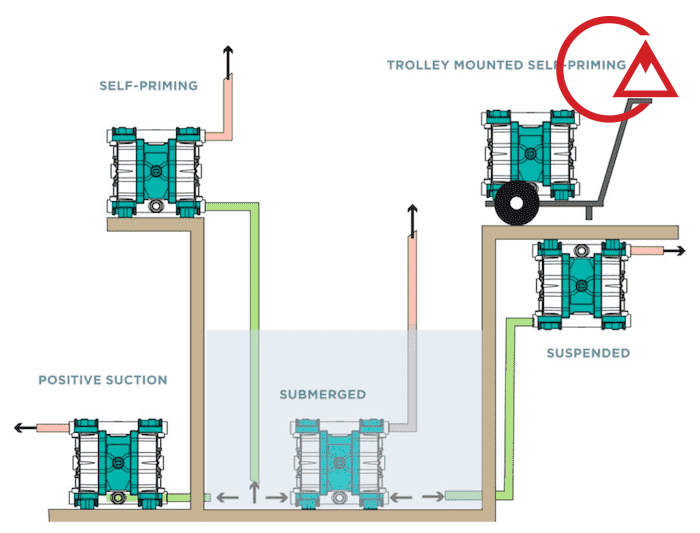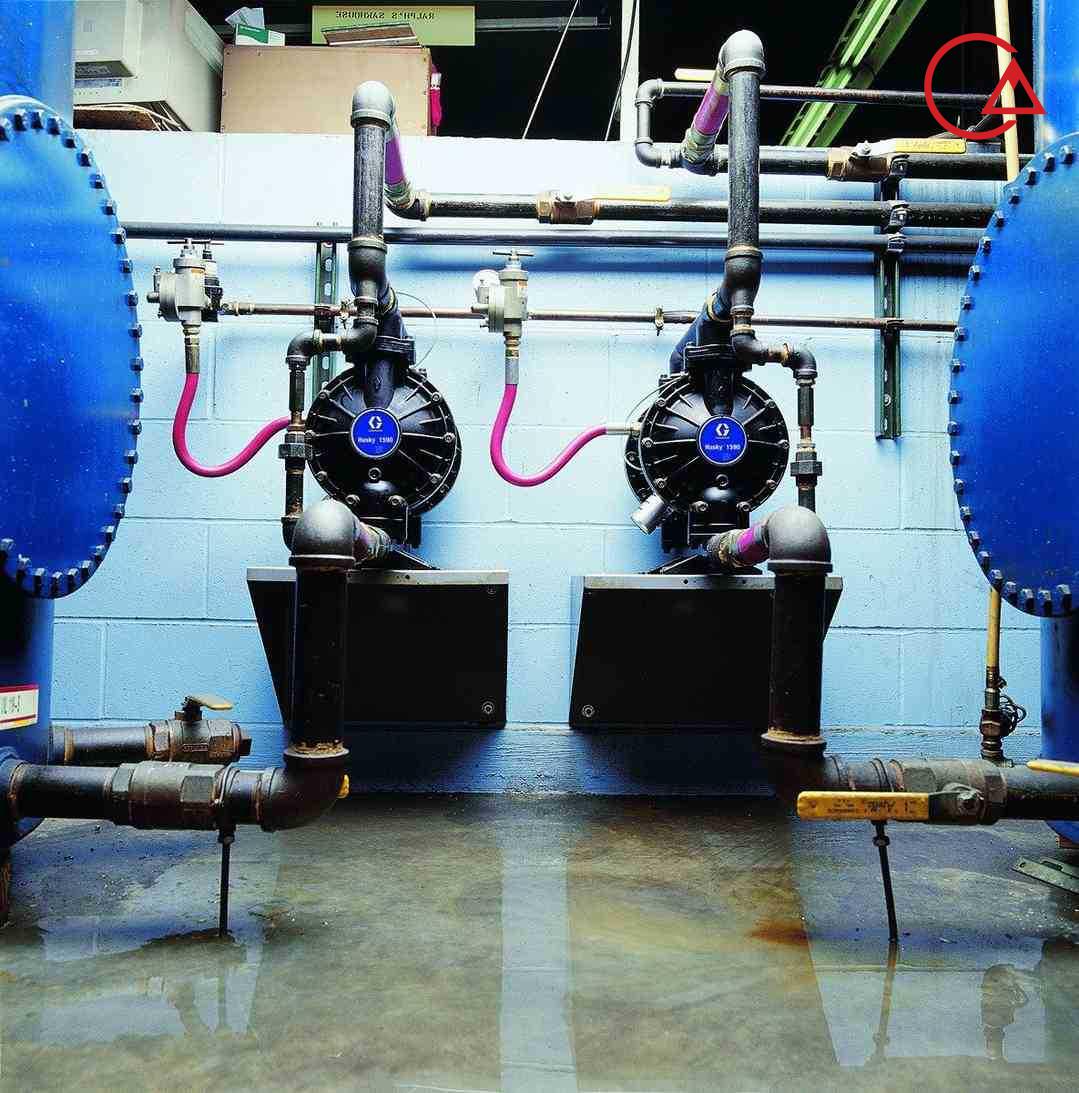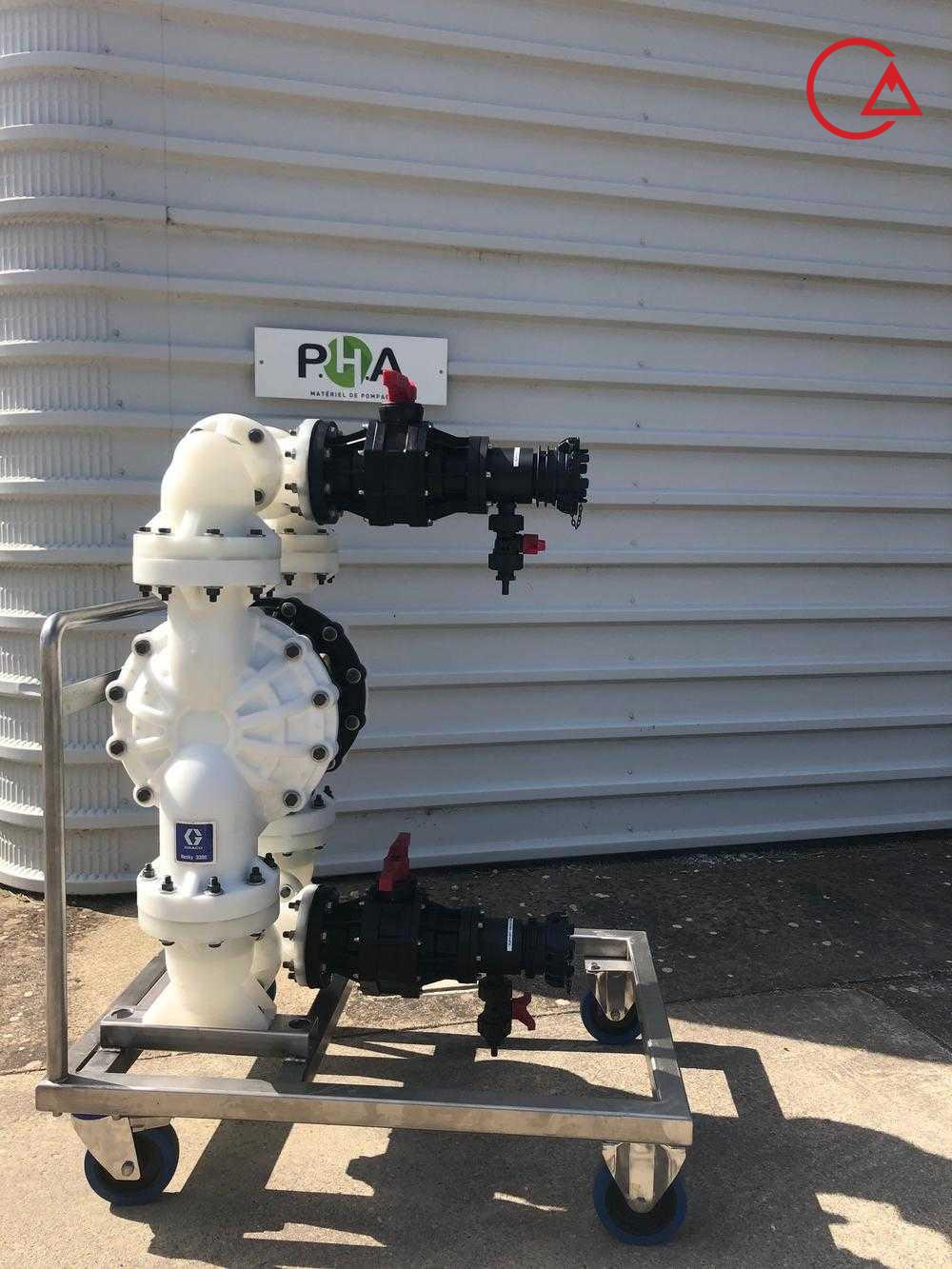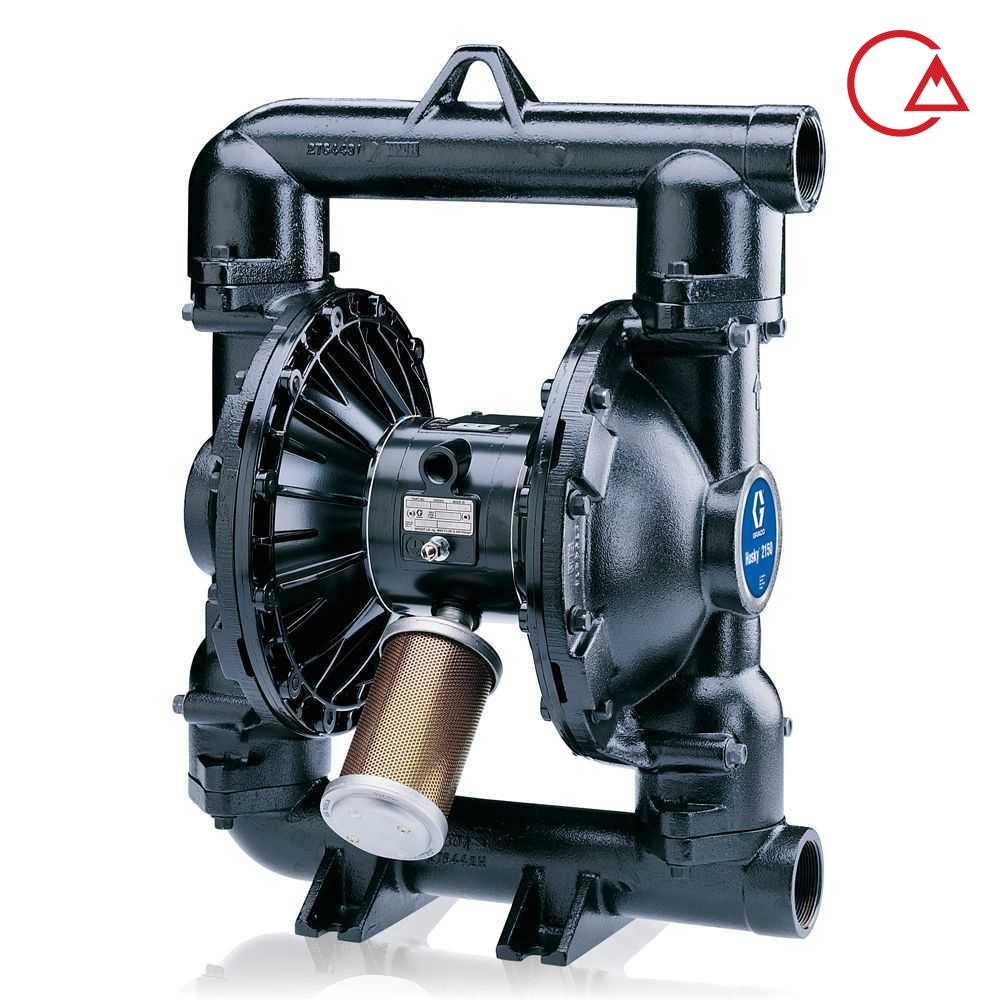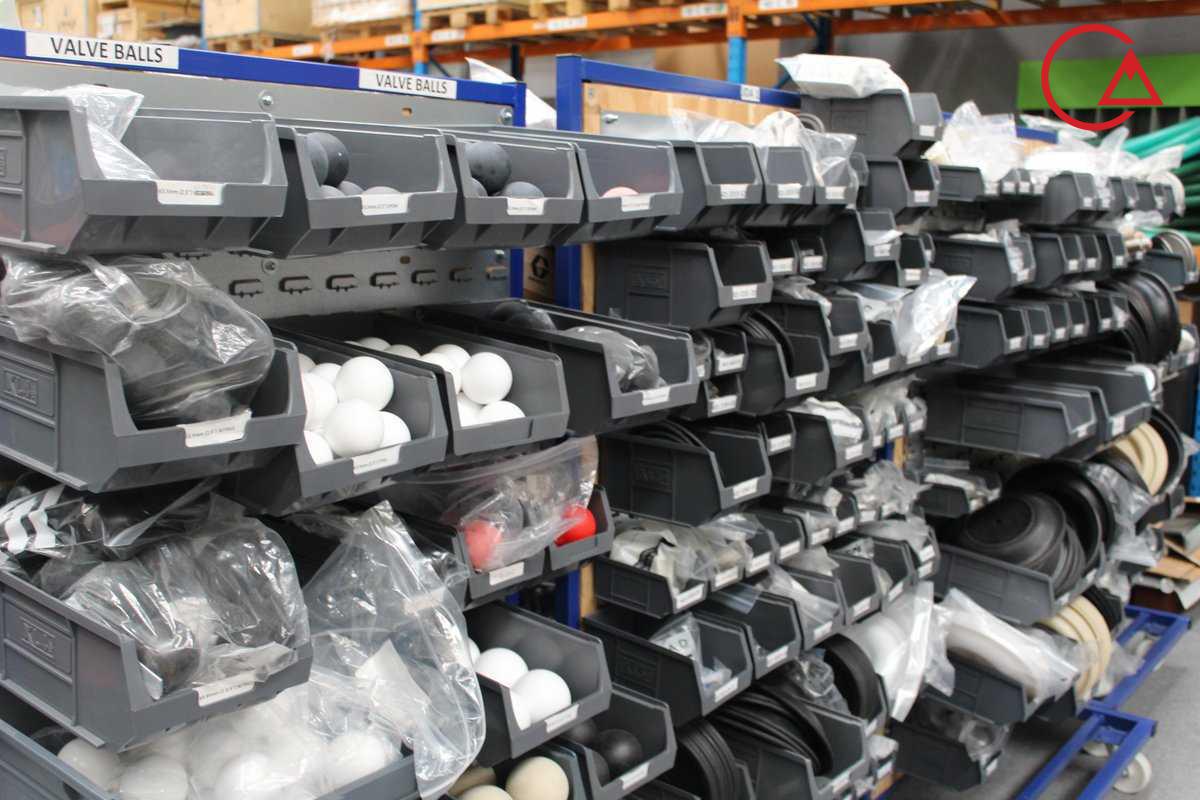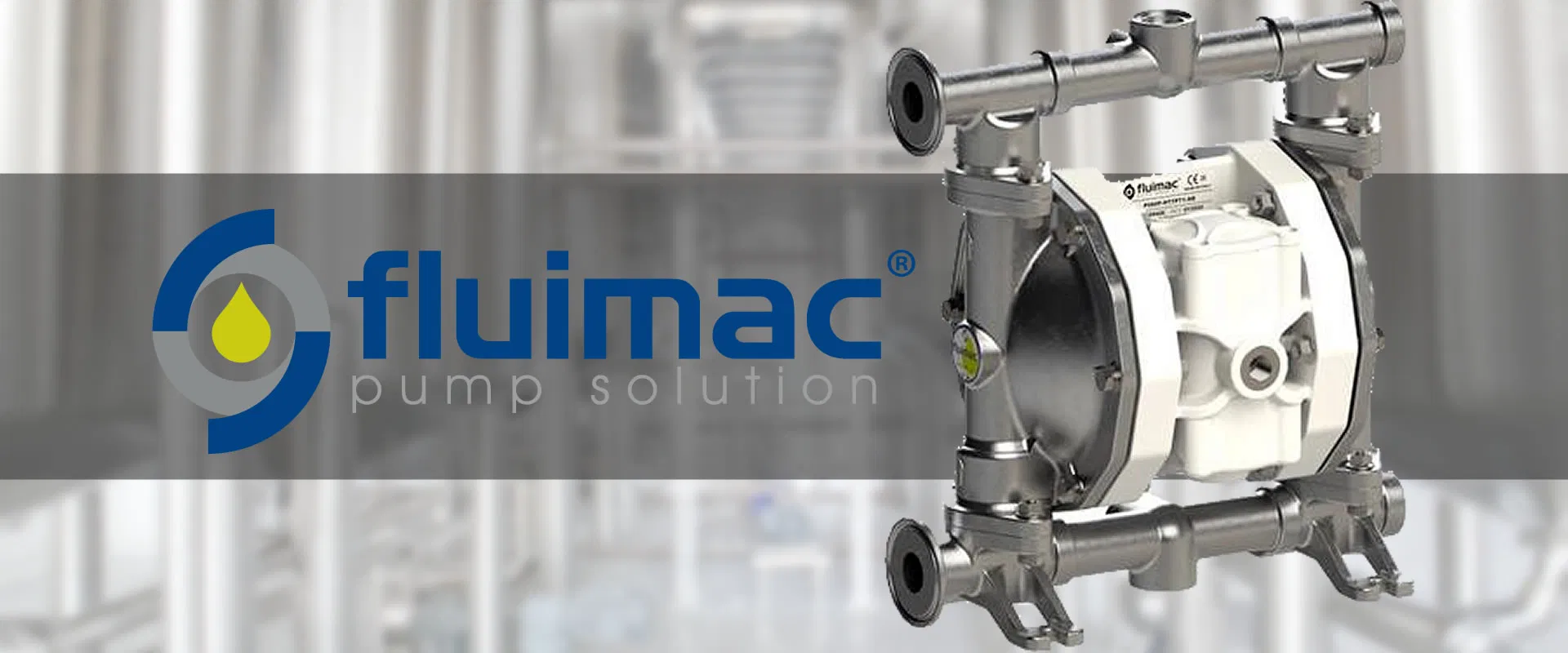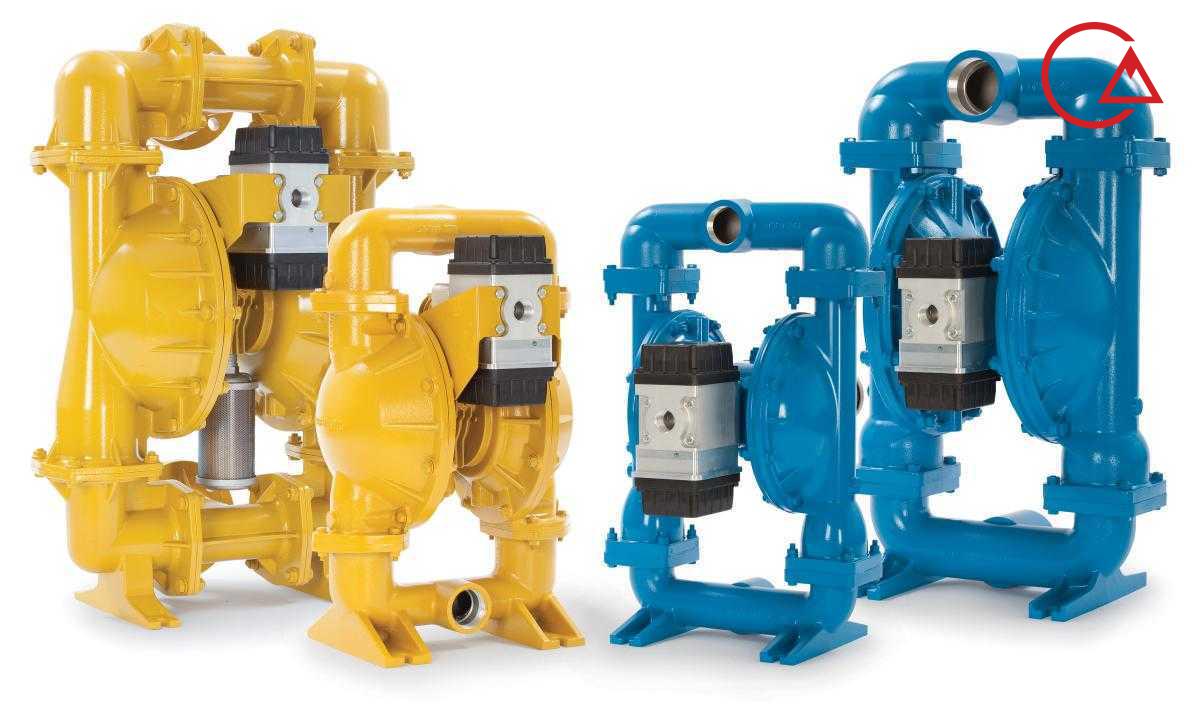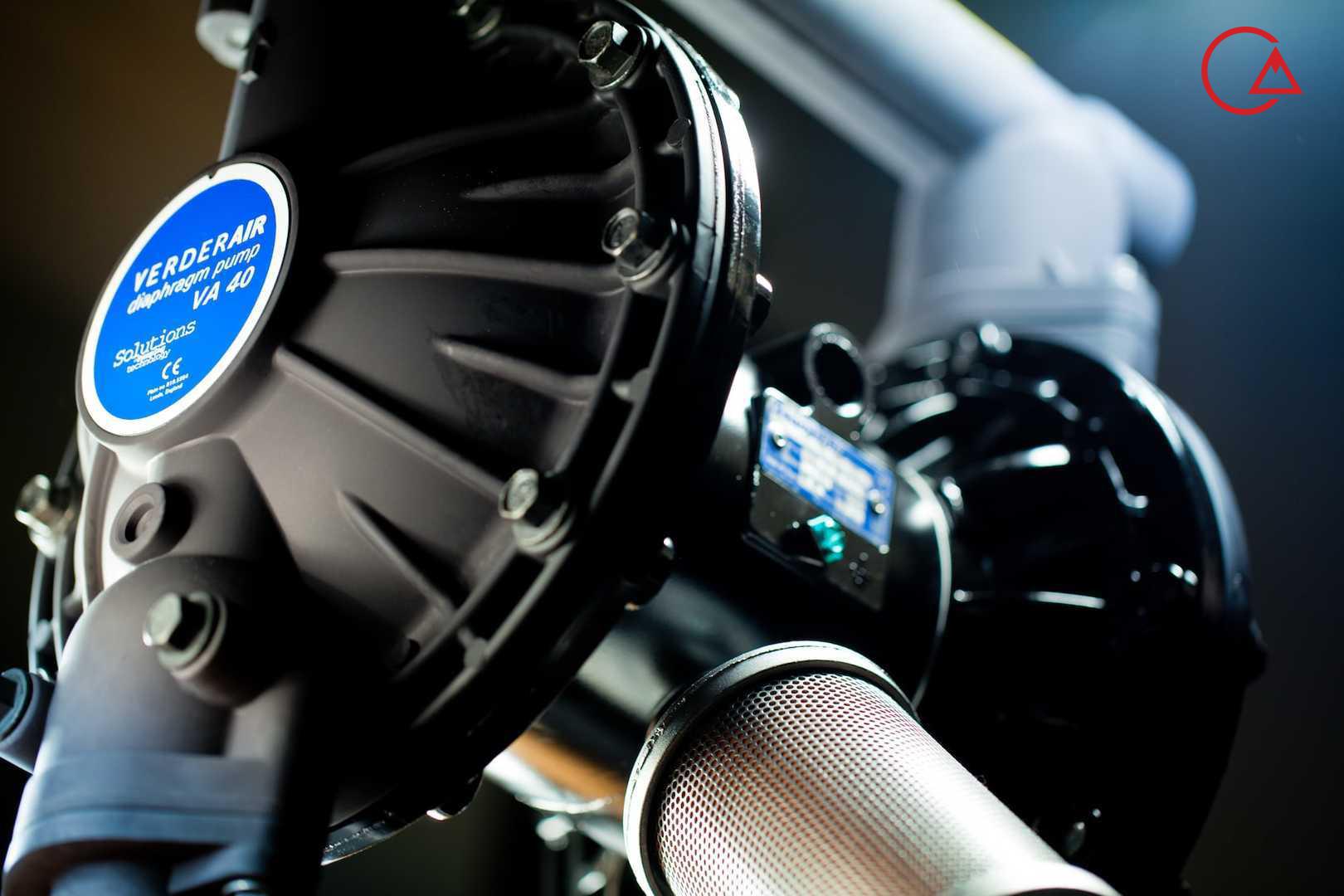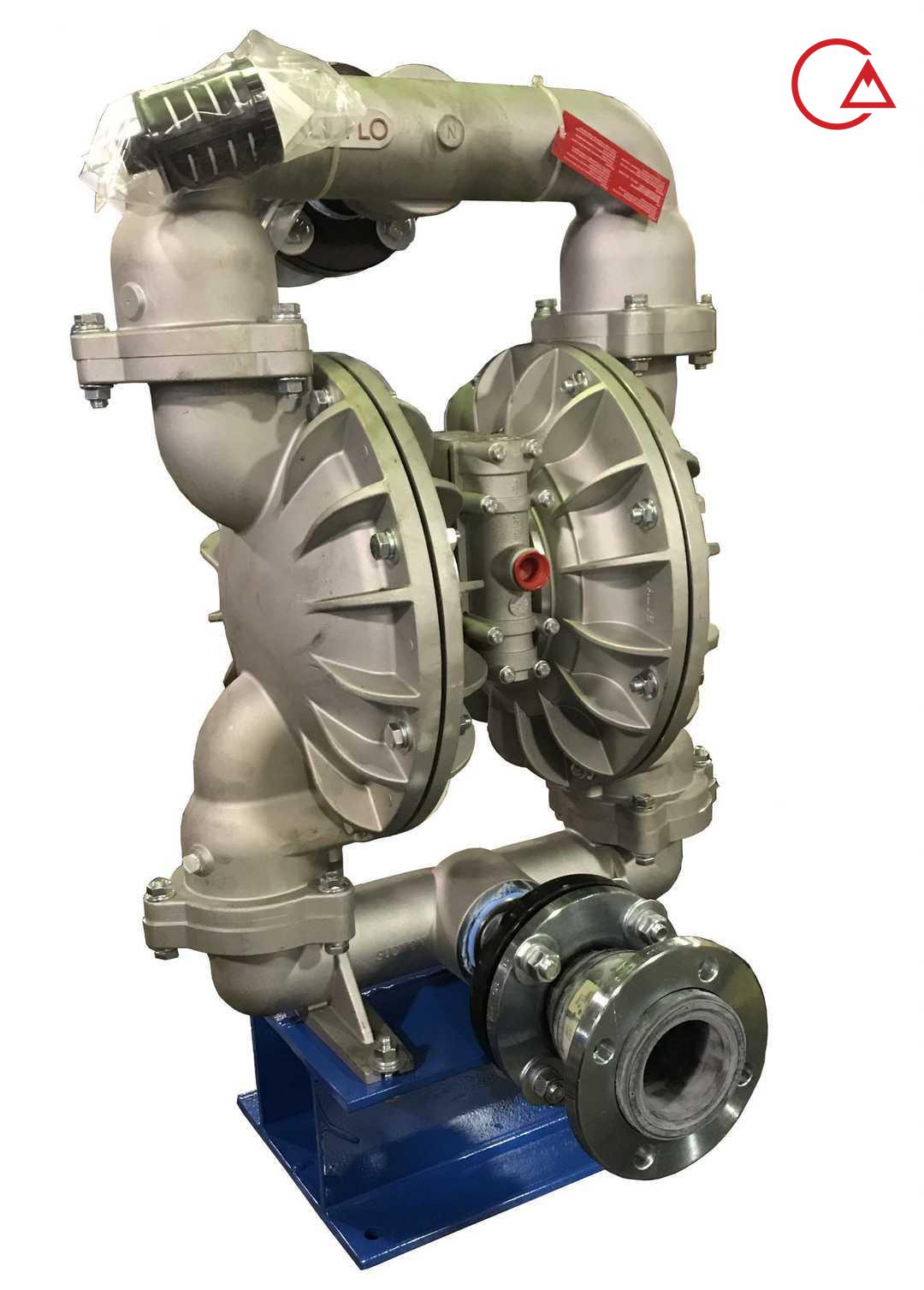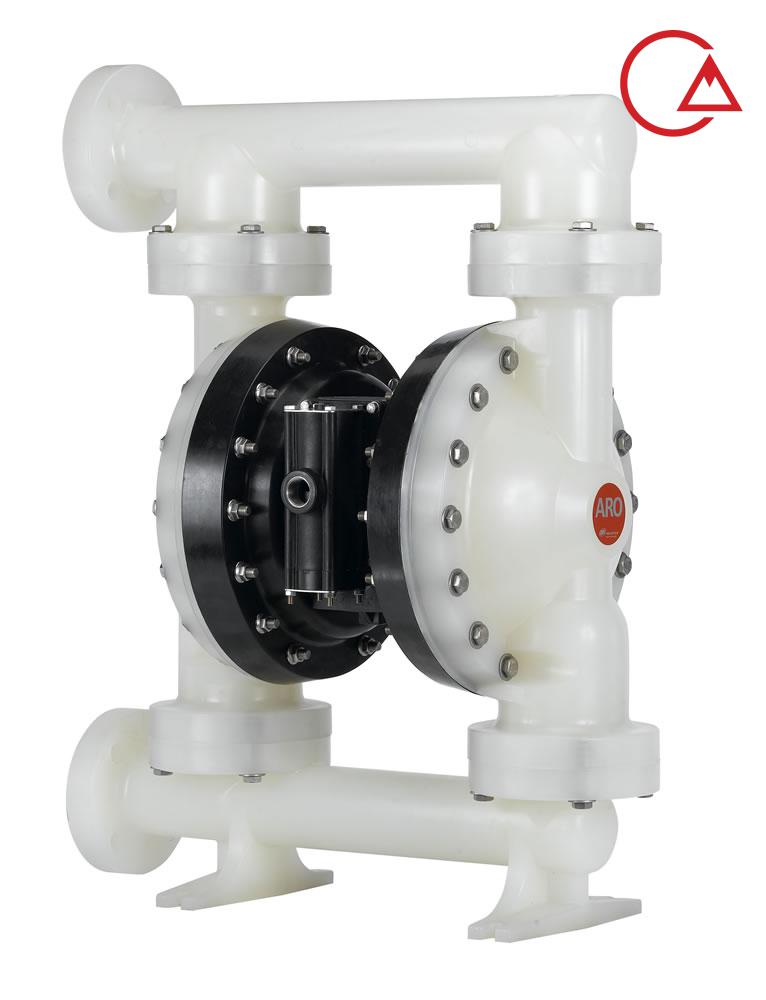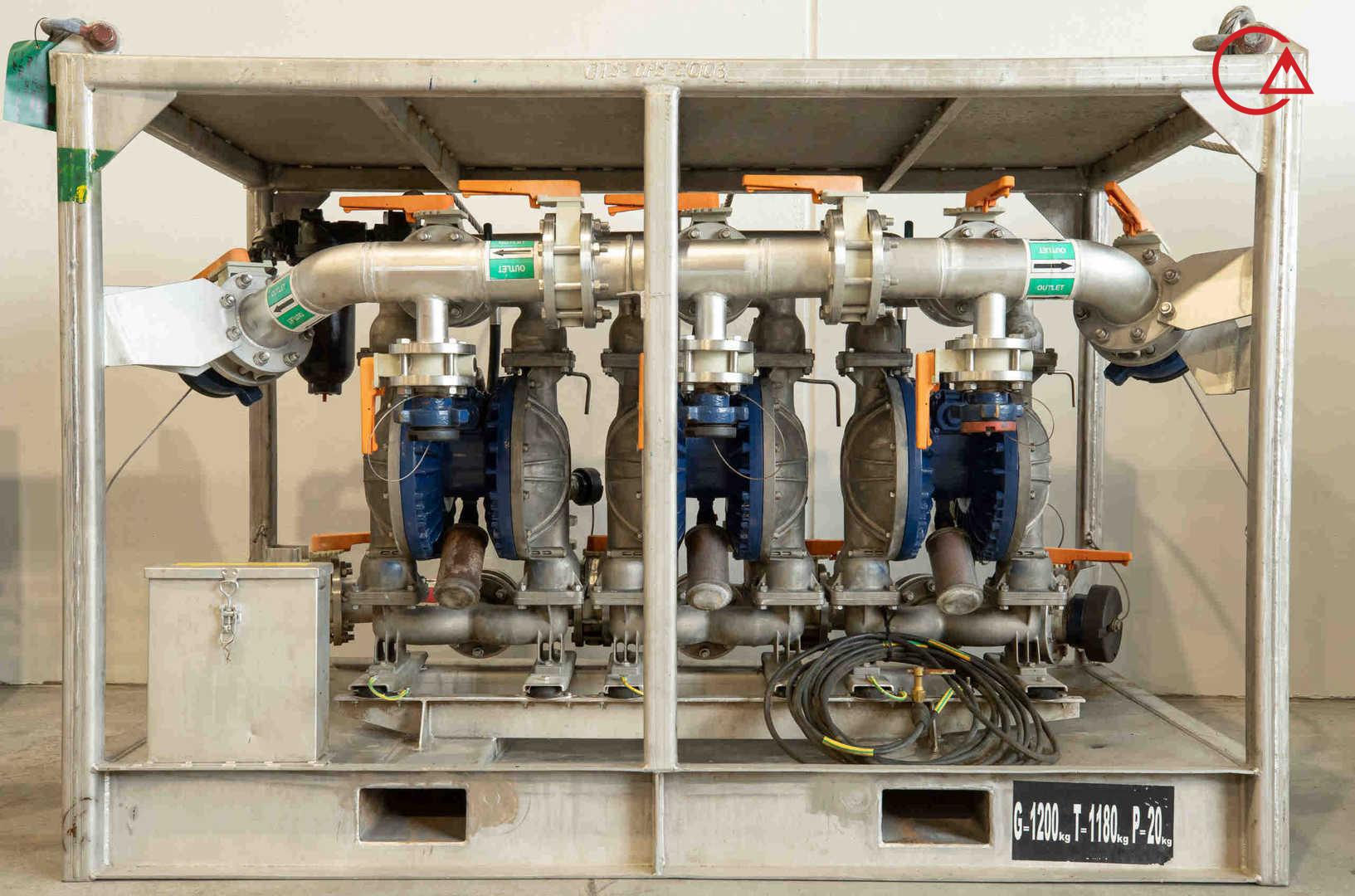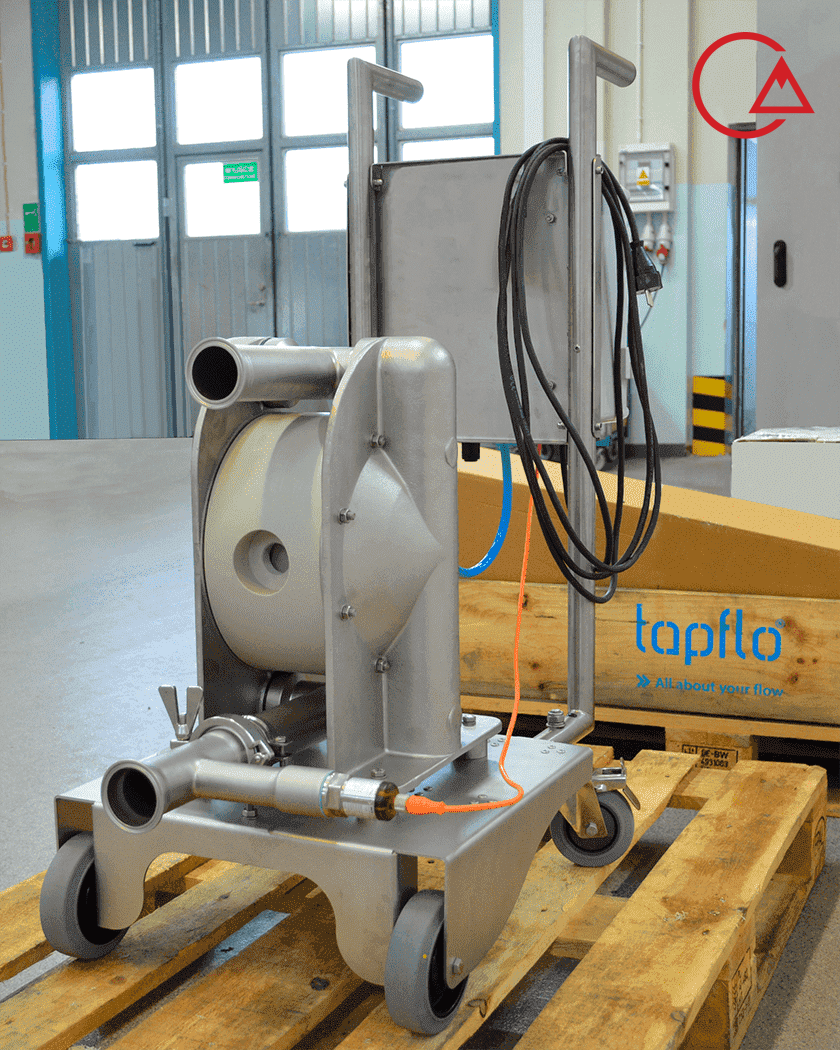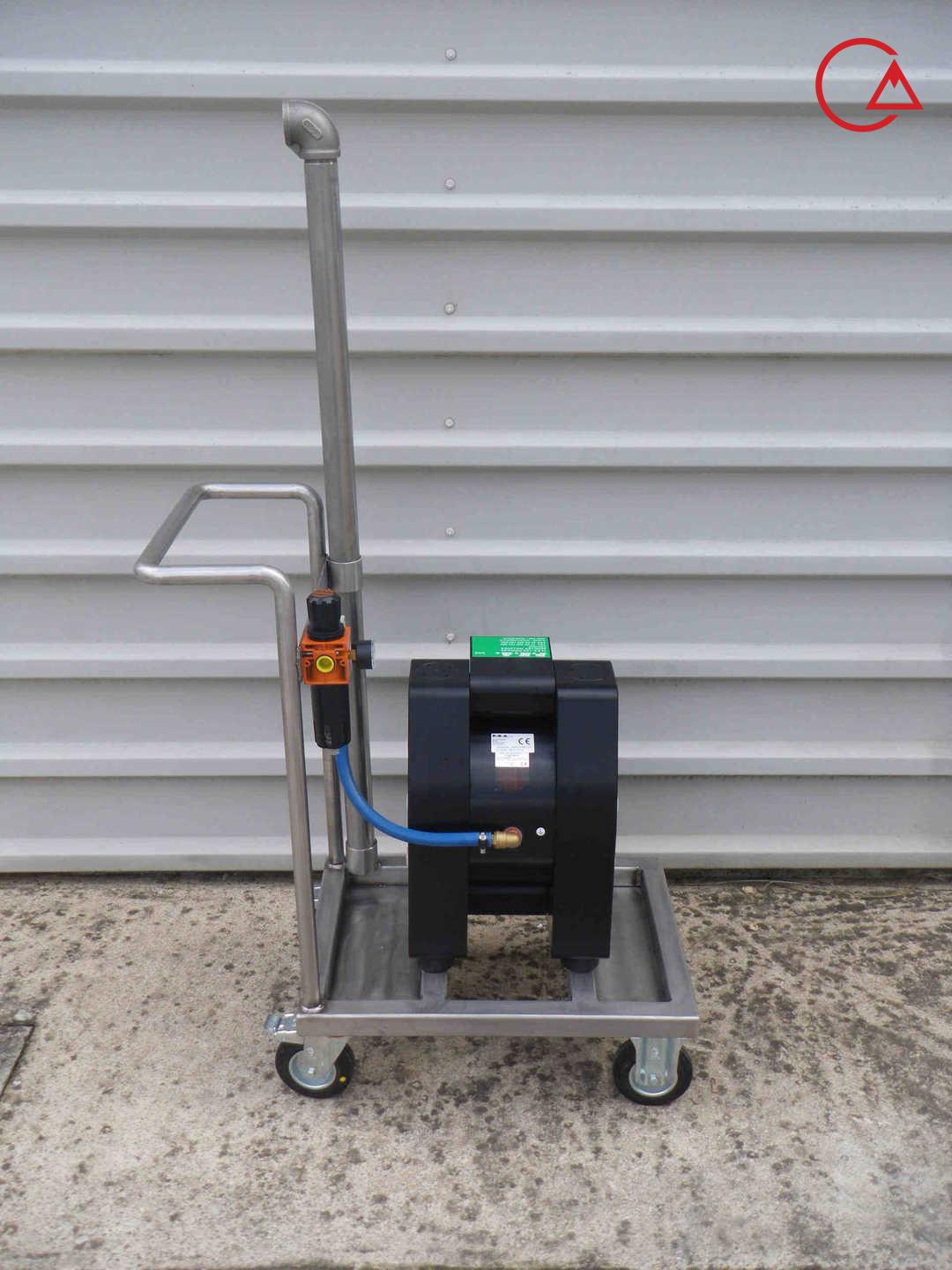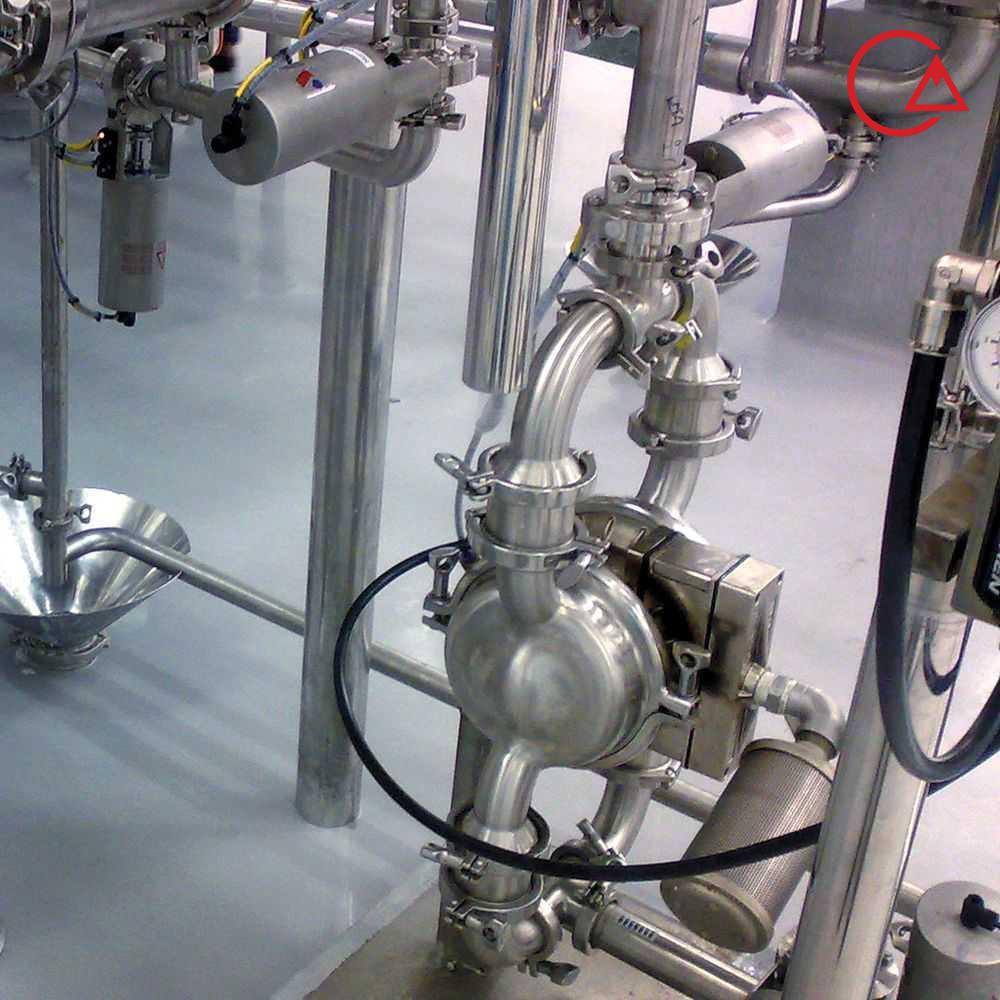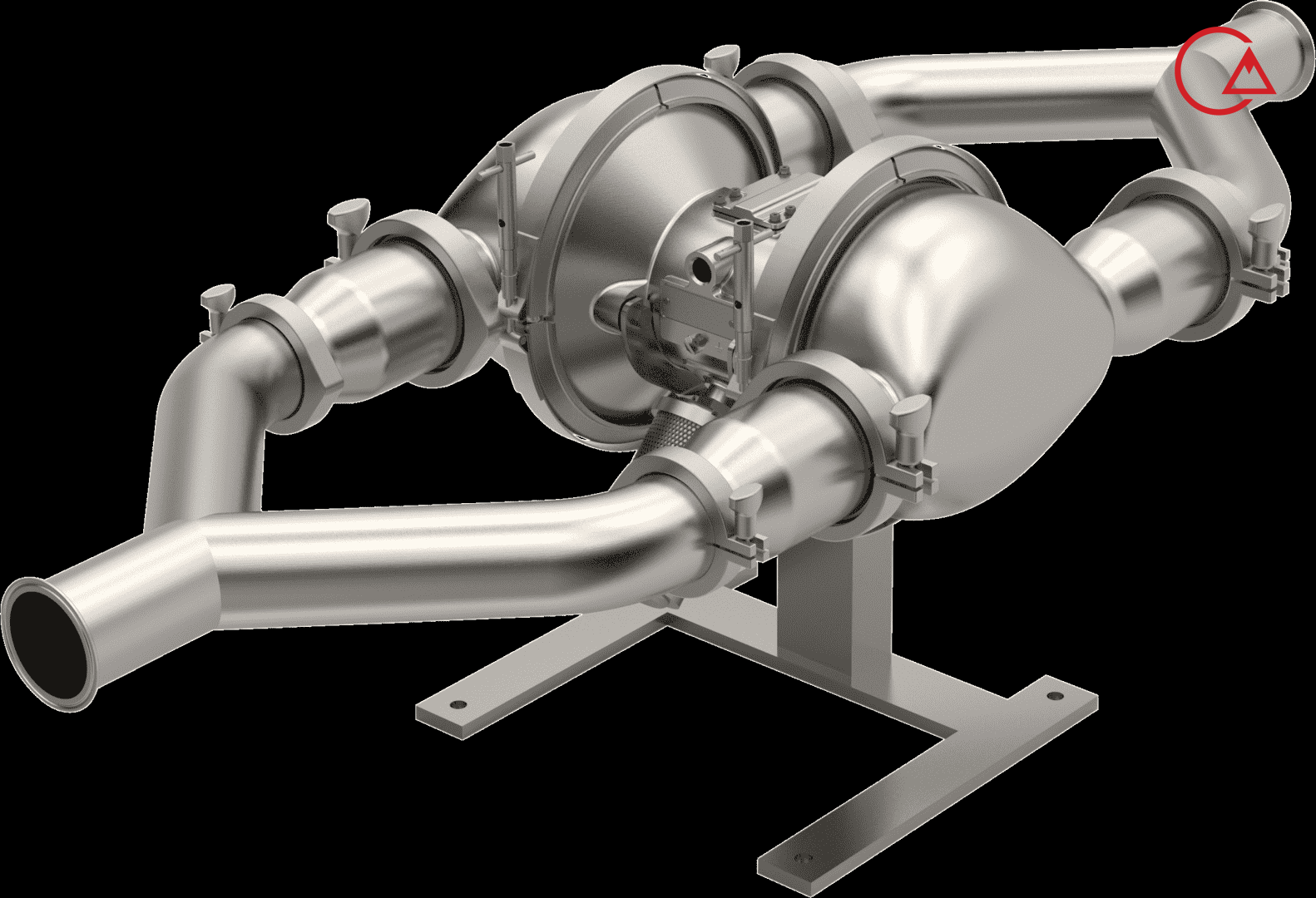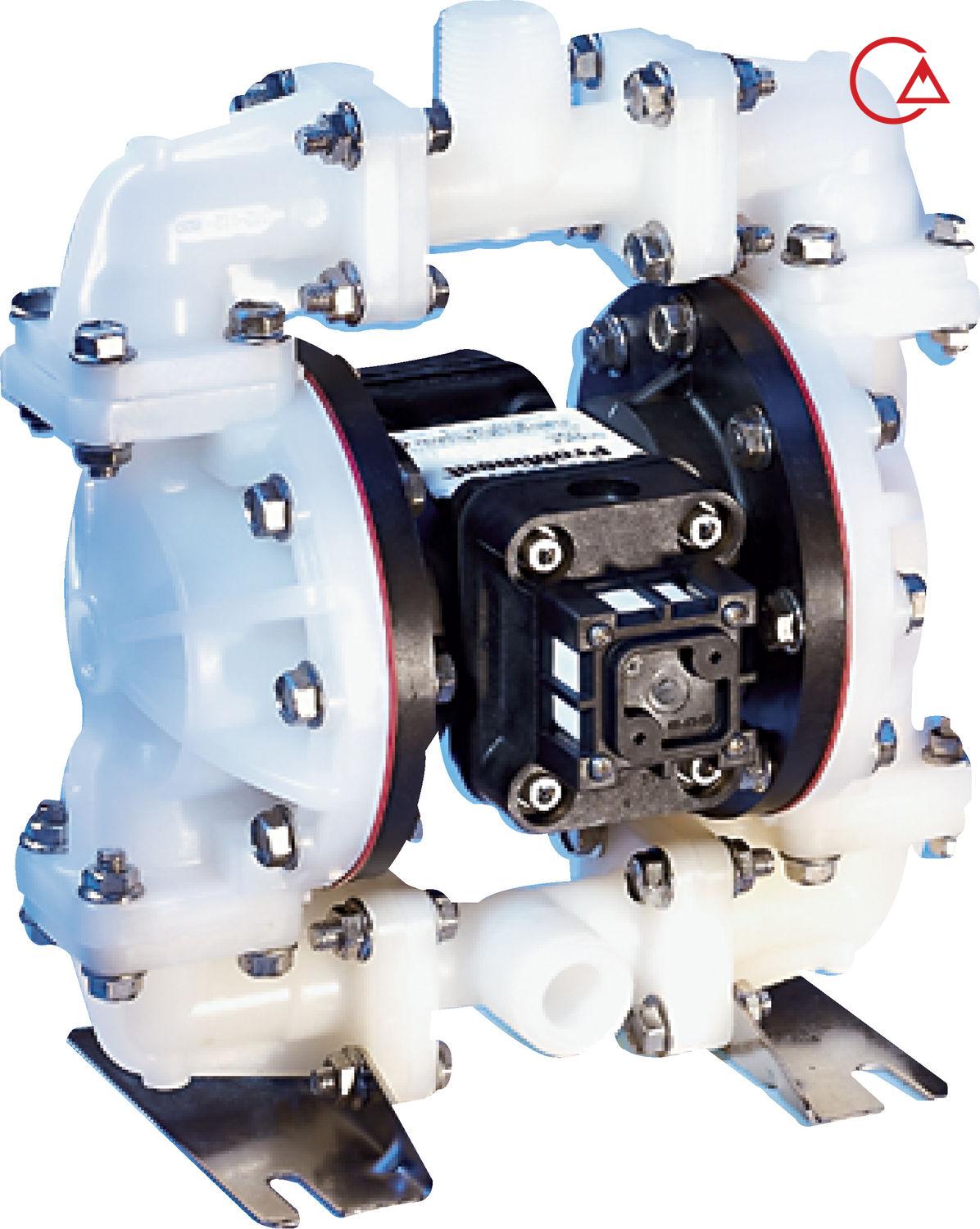
What is a diaphragm pump?
The diaphragm pump has a high suction power and also does not require ventilation. It does not have mechanical seals and is explosion-proof, and also with its very easy use, it is used for pumping all kinds of acids, bases, liquefied gas, edible and industrial oils, solvents, etc. Types of diaphragm pumps include pneumatic diaphragm pump, manual diaphragm pump and electric diaphragm pump. Among its features, we can mention its working mechanism, reasonable price, high efficiency and ease of use, which are used to pump all kinds of fluids.
Diaphragm pump
These pumps have two diaphragm plates and, depending on the type of fluid that is flammable or simple, electrical systems or pneumatic actuators are used.
Introduction video of diaphragm pump (pneumatic pump – air pump)
Technical specifications of Diaphragm Pump
How diaphragm pump works (pneumatic)
To get acquainted with how the diaphragm pump works, it is necessary to first know some points about these pumps. The most common type of these products are dual-channel diaphragm pumps. These pumps have two diaphragms and a chamber, the diaphragms of which are connected to each other by an interface rod. These diaphragms move in a linear direction. Pneumatic pumps have an air distribution valve. This valve is responsible for injecting compressed air behind the diaphragms. By changing the air behind each diaphragm and draining the air from the other diaphragm, the diaphragms move. The diaphragm pump works in such a way that by performing this reciprocating operation continuously and reducing the pressure, the fluid enters the pump tank and in the next step, with increasing pressure, the fluid is transferred out and pumped.
Diaphragm pumps use one-way valves, hoses and valves. Tongue-pump pumps can pass fine solid particles. In these pumps, due to the presence of solid particles and the tendency of these particles to settle, the pump outlet is located at the bottom of the pump chamber so that the fluid with solid particles can be easily removed. In pumps whose outlet is located at the bottom, the transfer of viscous fluid with low flow and high pressure due to the lack of air out of the chamber, the displacement of the pump is reduced unless the flow rate is high and the air is discharged with the fluid.
Diaphragm pumps with ball valves are the most suitable type of these pumps. In these pumps, the inlet is located at the bottom of the diaphragm chamber and the outlet is located at the top of the chamber. This design in diaphragm pumps allows the gases inside the pump chamber to be easily evacuated due to the lightness associated with the fluid. The outlet located at the top of the pump allows air or vapors inside the pump to escape easily due to the lightness with the fluid.
The diaphragm, which is usually made of elastomer, is used as a seal or mechanical seal, and due to its material, it can be used in a wide range of temperature and pressure without the need for lubrication.
Diaphragm pump function
Diaphragm pump feature (air pump)
In diaphragm pumps, the power consumption and the amount of air consumed by the pump is related to the flow and output of the pump. If the pump output flow is zero, the amount of air consumed is at its lowest, and when we have the maximum flow, the amount of air consumed by the pump is at its highest. This feature of diaphragm pumps helps the pump output current to be usable at all intervals.
In diaphragm pumps, the compressed air pressure, flow rate and NPSH determine the outlet pressure and the head has no effect. The amount of NPSH required in a diaphragm pump is the same as for other reciprocating pumps. The criterion for determining NPSH is the rate of efficiency drop at constant velocity or flow, which is about 3%.
Diaphragm pump actuators
Air Operated Double Diaphragm Pump, also known as AODD Pump. These products are made with different drivers. like the:
Electrical diaphragm pump
Manual diaphragm pump
Pneumatic diaphragm pump
Pneumatic compressed air starters are more widely used in this type of pumps and are often known by this name in the industry.
Electric diaphragm pump
Some manufacturers of diaphragm pumps have developed diaphragm pumps with pneumatic actuators. Diaphragm pumps with electric drive can be used when compressed air is not possible. This series of diaphragm pumps usually has a lower efficiency than diaphragm air pumps. The following figure shows an example of electrically driven diaphragm pumps.
Electric diaphragm pump
High pressure diaphragm pump
As mentioned, diaphragm pumps are capable of producing 8 times the output pressure. To achieve higher pressures, some diaphragm pump manufacturers have developed high-pressure diaphragm pumps. Diaphragm pumps are often one-to-one and produce 1 outlet pressure per 1 inlet air pressure. High pressure diaphragm pumps have 2 outlet pressures for 1 inlet pressure. This series of diaphragm pumps are mainly used in filter press systems. High pressure diaphragm pumps are often marketed in metallic materials.
Balach pressure diaphragm pump
Working range
Size: 3/8, 1/2, 3/4, 1, 1 ½, 2 and 3 inches (made in special conditions over 6 inches.)
Maximum flow: 300 gpm or 62 cubic meters per hour or 1041 liters per minute
Maximum head: 8 times or 80 meters (16 times high pressure series)
Compressed air pressure of the pump starter: maximum 8 times
Diaphragm pump – air pump
Material of diaphragm pump
Pump shell type
Al (Aluminum): For general use
PP (poly
Propylene): For acids and bases: the type of acid and the concentration and working temperature are very decisive.
S.S316 (stainless steel): For all kinds of acids and corrosive substances
AC (Acetal): For a variety of incendiary materials and solvents
KR (PVDF canary): For highly corrosive chemicals and acids
Ductile cast iron: For abrasives and slides
Diaphragm material
Teflon PTFE
Hytrel Hytrel
Santoprene Santoprene
Nitrile Nitrile
Neoprene Neoprene
Kanyar PVDF
Material of one-way pump valve
Diaphragm pumps use one-way valves, hoses or valves. Due to the characteristics of diaphragm pumps in the transfer and movement of various materials, this pump is also used to transfer slippery and abrasive materials. To increase the wear resistance of these parts, metal one-way valves are protected with a thick layer of plastic and liner, or elastomeric materials are used in its construction.
Advantages of diaphragm pump
Advantages of diaphragm pump or air pump
They are very suitable and widely used in cases where the fluid or environment is flammable or explosive.
No mechanical flood and minimum leakage
Pressure and pump head: up to 60 meters
Ability to pump heavy fluids with high viscosity
High suction power
Ability to immerse in fluid
Easy maintenance
Dry operation capability
Ability to suck from barrels and tanks with different dimensions
Ability to control and adjust the flow rate and pumping pressure by changing the air pressure
Can be installed above the fluid level, below the fluid level and immersed inside the fluid.
Ability to install in closed environments due to lack of heat generation during work.
Portable and can be installed in different places
How to install a diaphragm pump
Working range
Maximum flow 300GPM or 62 cubic meters per hour
Maximum pressure 8 times
Maximum head 80 meters
Application of diaphragm pump (air pump)
Uses of this product include draining flammable fluids, alcohols, edible and industrial oils, liquefied gases, acids and bases, juices, milk, edible fluids, detergents. Also from these pumps for pumping and transferring fluids and slurries such as ceramic slurries, paints, cement grouts, chemicals, adhesives, resins, petroleum products, drilling mud, mineral concentrate, printer ink, sewage, latex, burnt oil, coating Used asphalt, wastewater, radioactive wastewater, porcelain paste, mineral waste, volatile solvents and explosives and so on.
Can be used for a wide range of dilute and concentrated fluids, corrosion resistant, suitable for flammable fluids, no leakage, etc.
Barrel pneumatic diaphragm pump
Diaphragm barrel discharge pumps can be used to transfer fluids from inside tanks and barrels. The barrel pneumatic diaphragm pump works with compressed air and has a high suction power, and as a result, they are used to pump all kinds of fluids. This type of pump is able to suck fluids up to a height of 8 meters and due to the high variety of production in the body material and diaphragm is used to suck and transfer fluids from inside the tanks and barrels. Also, due to the explosion-proof capability of these pumps, it is very useful for suction and transfer of flammable liquids such as solvents.
Barrel pneumatic diaphragm pump
How to maintain diaphragm pumps
Check and tighten all pump connections periodically to prevent leakage.
The diaphragms of these pumps are most prone to damage, as they are in direct contact with the fluid and are also vulnerable due to their flexibility and must be inspected periodically.
One of the characteristics of these pumps is dry operation, but dry operation in the long run causes damage to the pump and also unnecessary wear of pump parts.
The internal chamber of the pump must be thoroughly rinsed after each use to prevent the destructive effects of the fluid remaining in the pump (depending on the conditions of use of the pump, it must also be sterilized).
Dynamic viscosity table of materials
Viscosity table of cosmetic products
Dynamic viscosity table of cosmetics
Cosmetic products Dynamic viscosity (milliseconds) Temperature (degrees Celsius)
Shampoo 3000 20
Liquid soap 85 60
Toothpaste 70000 40
Hand cream 780 20
Vegetable and animal oil viscosity table
Viscosity table of edible oils
Vegetable and animal oils Dynamic viscosity (milliseconds) Temperature (degrees Celsius)
Castor oil 580 20
Coconut oil 60 20
Corn oil 30 60
Cottonseed oil 60 20
Large oil 30 40
Olive oil 40 40
Palm oil 45 40
Peanut oil 40 40
Soybean oil 60 20
Fish oil 35 40
Pork fat 65 40
Dairy products viscosity table
Dairy products viscosity table
Dairy products Dynamic viscosity (millipascals per second) Temperature (degrees Celsius)
Korea 45 40
Cheese 30000 60
Chocolate butter 50 60
Condensed milk 80 40
Cream (30 to 50%) 15-115 20
Milk 2 20
Whey 800-1500 40
Doogh 150 40
Liquid eggs 150 45
Viscosity table of industrial oils
Industrial oil viscosity table
Industrial oil Dynamic viscosity (milligasgals per second) Temperature (degrees Celsius)
Engine oil 5 30 20
Engine oil 10 50 20
Engine oil 15 130 20
Engine oil 40-15 390 20
Engine oil 40-15 3000 15-
Engine oil 50 750 20
Hydraulic oil 46 120 20
Hydraulic oil 68 195 20
Hydraulic oil 100 300 20
Grace 90 700 20
Grace 140 2700 20
Viscosity table of food types
Food viscosity table
Food Dynamic viscosity (millipegals per second) Temperature (degrees Celsius)
Korea 30000 40
Baby food 1400 40
Brewer’s yeast 370 20
Vegetable soup 430 20
Chocolate Sauce 280 50
Fruit pulp 600 20
Dessert 1500 40
Gelatin 1200 45
Glucose 4300-6800 25-30
Broth 110 80
Jam 8500 20
Malt extract 9
500 20
Mayonnaise 2000 20
Vegetable gelatin 300 40
Juice Concentrate 2500 20
Pudding 1000 40
Salad dressing 1300-2600 20
Apple puree 1500 20
Tomato sauce 1000 30
Tomato puree 195 20
Honey 2000 40
Viscosity table of industrial products
Viscosity table of industrial products
Industrial products Dynamic viscosity (millipegals per second) Temperature (degrees Celsius)
Glycerin 100% 650 20
Varnish (25% pigment) 3000 20
Polyester resin 3000 30
Printing ink 550-2200 40
Resin 7100 20
Glycol 40 20
Latex emulsion 200 20
Paraffin emulsion 3000 20
Liquid wax 500 90
Cleaning emulsion 1500 70
What is a diaphragm pump?
What are the types of diaphragm pumps?
Let us know what you think
Dear visitor, we would like to inform you that unfortunately, due to the abuses committed by some of the visitors of this section, after registering a consultation request, our colleagues will contact you as soon as possible and answer all your requests and questions, dear ones. They will answer by phone and it is not possible to enter a written answer in this section, thank you in advance for your patience and cooperation.
first name and last name
